Colonnata, what to see in the village of lard and marble
Colonnata is a splendid village set among marble quarries, in the Apuan Alps: it is located a short distance from Carrara, from whose center it is little more than seven kilometers away, which can be traveled by a convenient road that enters the marble basin that takes its very name from the village (the Colonnata basin) in about fifteen minutes, through the hamlets of Codena and Bedizzano. Colonnata, which today has just over two hundred inhabitants (but had more than a thousand in the early twentieth century), sees behind it Mount Maggiore, Mount Spallone and Mount Sagro, and is located in one of the most spectacular marble districts.
An excursion destination for tourists staying on the Apuan Riviera, in Versilia or Lunigiana, Colonnata attracts thousands of visitors every year, especially during the summer season, who come here to taste Colonnata lard, the town’s typical product (a true delicacy that attracts gourmets from all over the world) and to see the spectacle of the marble quarries. Here’s what not to miss on a visit to Colonnata!
1. The village
The village of Colonnata has very ancient origins: the quarries in its marble basin were in fact already exploited in Roman times (we also know this because artifacts from the period have been found), so it is to this distant period in time that the first settlement dates back. The name of the village may derive from the Latin collis, “hill,” or columen, “summit,” indicating its location. The current layout of the village is what it took on in medieval times. A quarrymen’s village, made up of ancient stone houses, it will surprise by one of its peculiarities, namely the fact that its two squares (Piazza Palestro, the main square where the “Sagra del Lardo” is held, and Piazza Alberto Meschi) are entirely paved in marble: not even in the historic center of Carrara can one see squares where marble is the only material used to pave the square. In Piazza Palestro, a plaque also commemorates the anarchists “killed on the road to freedom” (Carrara is believed to be the Italian capital of the anarchist movement).
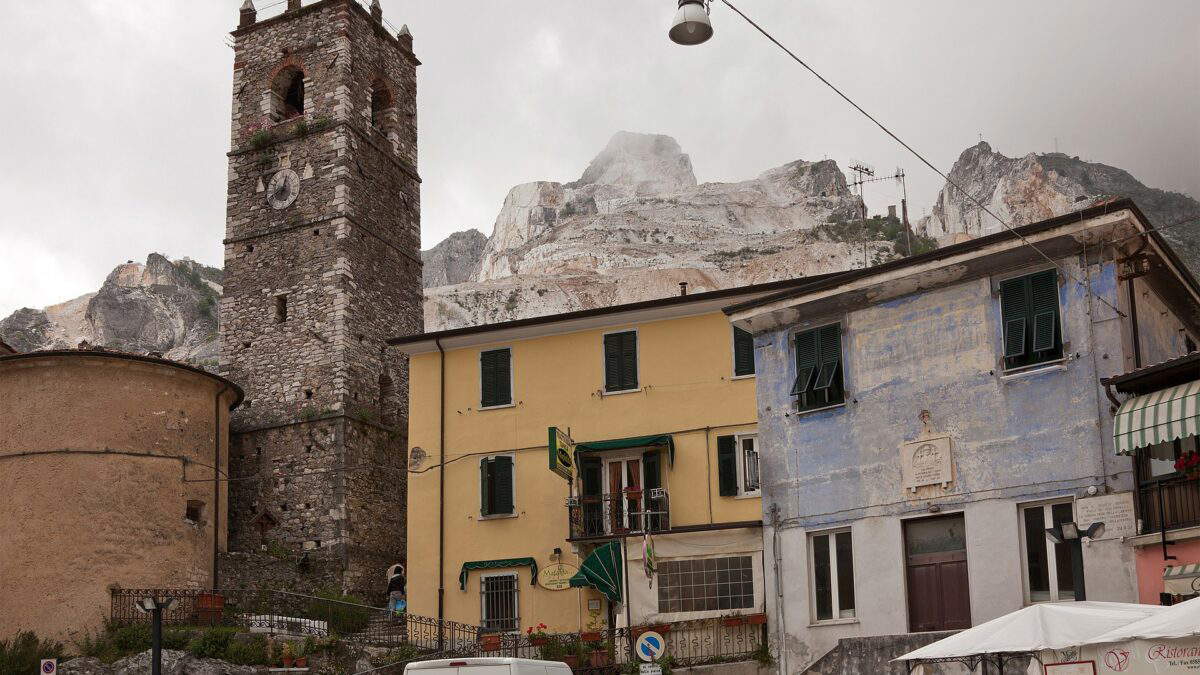
2. The church of San Bartolomeo
Colonnata’s only house of worship, the church of San Bartolomeo is located in the center of the village, in a small square on the highest point accessed by a short marble staircase.The earliest records of it date back to the 12th century, while its present appearance is 16th-century. Externally it has a bare facade and a very distinctive stone and marble bell tower decorated at the top with a cornice of bardiglio marble, while the portal, also adorned with a simple white marble frame, is surmounted by a circular window. The interior is a single nave: worth seeing are the altar made of inlaid marble, the 1628 marble altarpiece with the Virgin assumed into heaven between angels and Saints Lawrence and Anthony Abbot (the work of a local artist), and the unique white marble crucified Christ. Made from a single block of marble, it stands out for its high quality: mentioned as early as 1584, it is thought to be a work attributable to the school of Michelangelo.
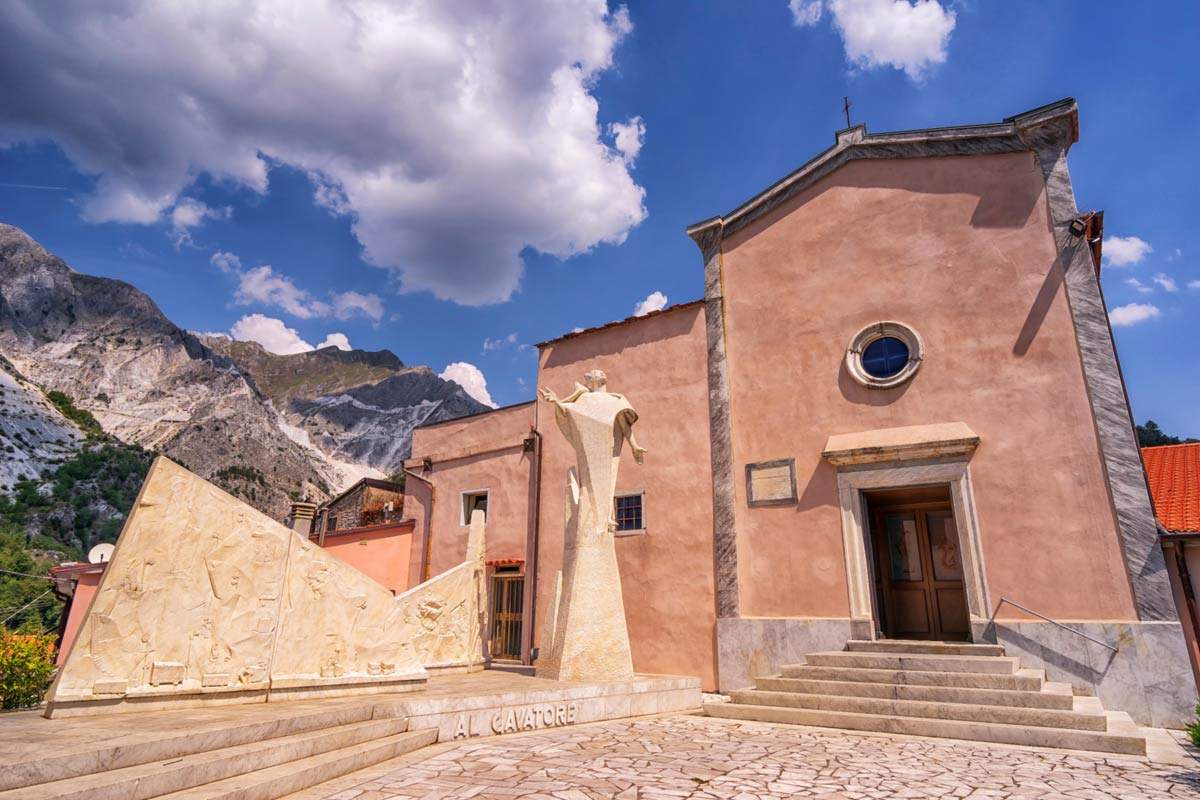
3. The monument to the quarryman
The monument to the quarryman, which celebrates the marble workers who, through toil and mourning, have made the town prosper over the centuries, was created in 1983 by sculptor Alberto Sparapani (Casale Marittimo, 1911 - Carrara, 2004). It consists of two parts, towering above a three-step base: the statue of the quarryman, hovering upward and echoing futurist aesthetics, and the two large wedge-shaped reliefs on which Sparapani depicted scenes of quarry work. Thus, one can observe quarrying activities, the work of the “tecchiaioli” (the famous “marble spiders” whose job is to clear the quarry face of debris when a block is extracted), cutting with the helical wire (a cutting method in use in the past; today, however, blocks are cut with the more efficient diamond wire), and transportation. Very peculiar is the scene of the varata, a mining system developed after the discovery of dynamite and in use for much of the twentieth century: a charge of explosives was placed near the wall from which the marble was to be carved, and detonated (a quarryman, depicted on the left in this case, gave a signal with a trumpet to warn his colleagues to take cover). Also depicted is lizzatura, the ancient and dangerous system of transporting marble blocks, which were driven down the valley on wooden poles.
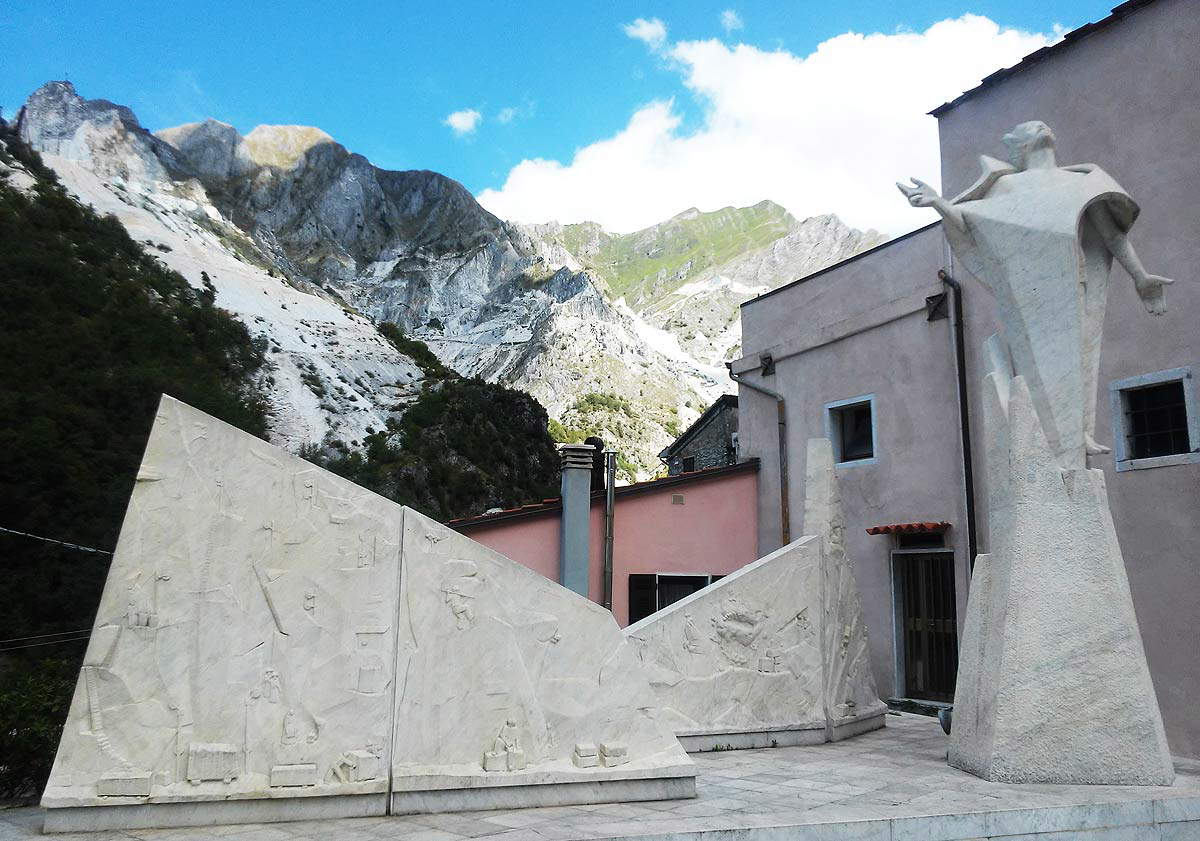
4. The larderies
Lardo di Colonnata is the product for which the village is world famous. It is a cured meat with a protected geographical indication (PGI), made from the fat obtained from the back of the pig, which is placed in special marble tubs (“conche”), salted with a special preparation composed of natural sea salt, black pepper, fresh rosemary and finely chopped garlic, and then cured for at least six months in dark, cool and poorly ventilated rooms. The result is a dense, white-looking cured meat (which may have some slight pinkish-colored streaks of lean), and a delicate, aromatic scent. There are many lard factories that still produce lard using this ancient method, which is essential for obtaining the PGI label. Lardo can also be bought by the piece (it is sold in small slices usually wrapped in yellow food-grade paper, but it can also be found in pre-packaged pieces in the many stores in the village), or it can be eaten in the bars of Colonnata. The Carraresi doc appreciate it with the typical focaccia, and in summer fresh sliced tomatoes can be added. Also common in the city is a dish that is not part of the tradition but has become widely popular in recent years: pizza with lard. And also popular in recent years are lard creams, made with finely chopped or ground Colonnata lard to make a spreadable mixture on crostini or slices of toasted bread.
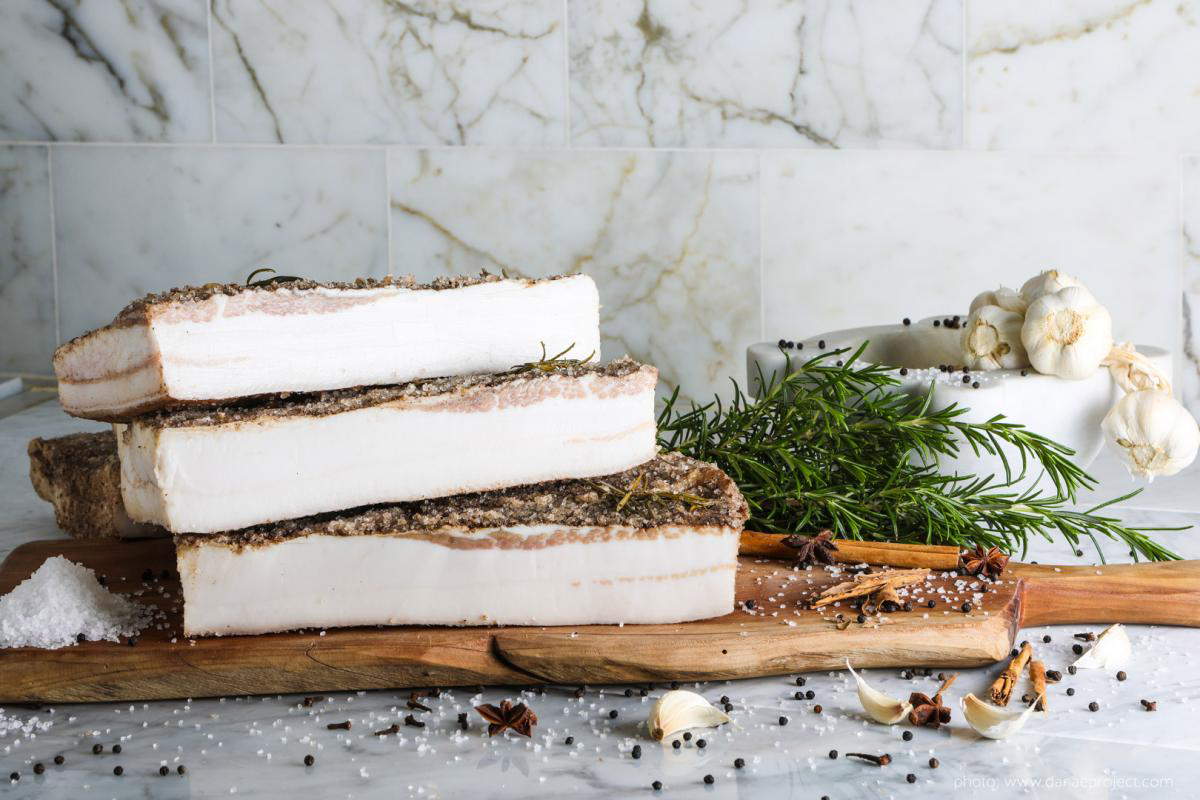
5. Excursions to marble quarries
Colonnata is an ideal base for excursions to visit the marble quarries of Carrara. The oldest ones are located in the Colonnata basin: in fact, just before arriving at the village you can stop your car for a visit to Fossacava, where the largest known Roman quarry is located. Also, again before arriving at the hamlet, one can stop at the bases where guided tours to the quarries depart by all-terrain vehicle: aboard a 4x4, skilled chauffeurs accompany visitors along the steep, narrow and winding quarry roads, which are inaccessible to normal traffic because they are reserved for marble transport vehicles (and also because they require specific driving skills). Visits always take place with licensed tour guides who explain the wonders of marble directly in the heart of the mountains where the marble is quarried (always remember that these are still workplaces).
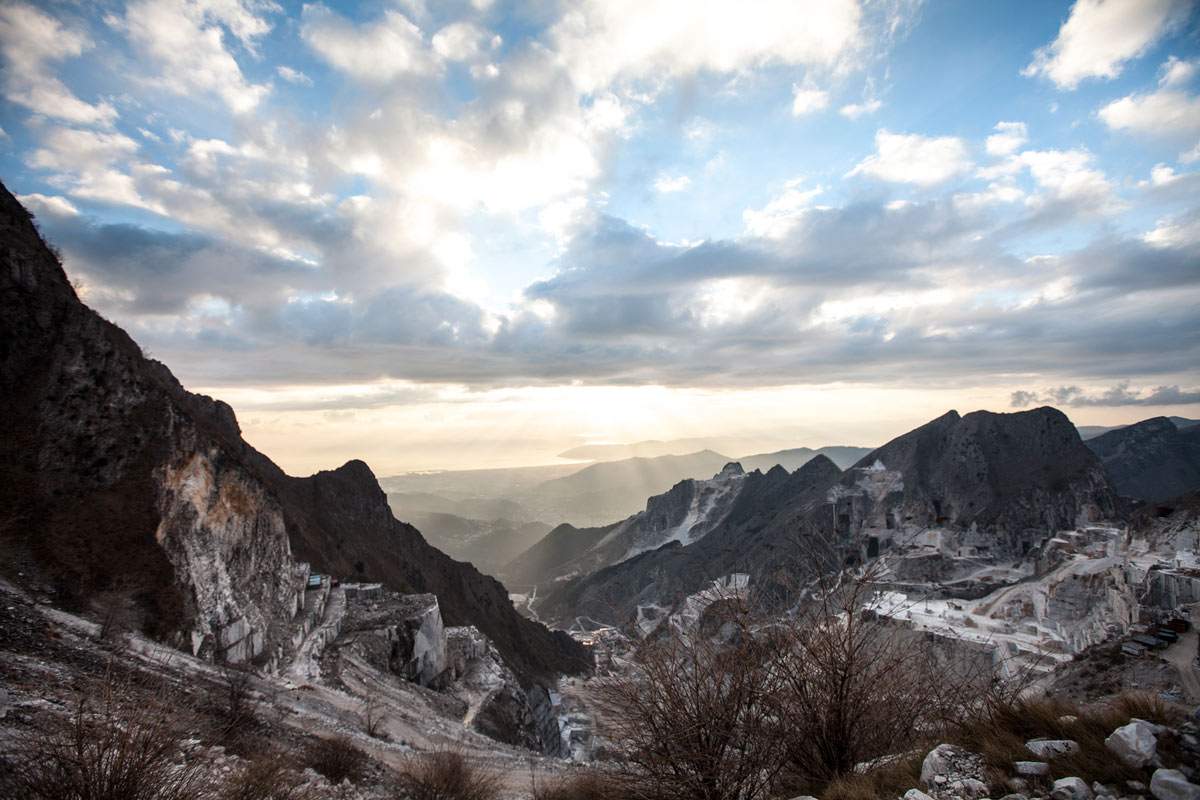
 |
| Colonnata, what to see in the village of lard and marble |
Warning: the translation into English of the original Italian article was created using automatic tools. We undertake to review all articles, but we do not guarantee the total absence of inaccuracies in the translation due to the program. You can find the original by clicking on the ITA button. If you find any mistake,please contact us.



























